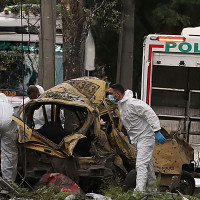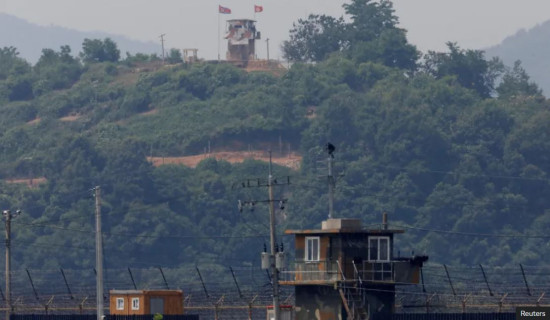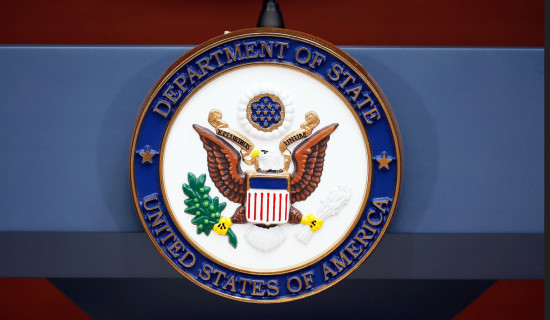- Saturday, 23 August 2025
Relishing China’s Mesmerising Development
As we landed in Beijing at midnight on June 16, 2025, my curiosity to know modern China from the close quarters reached a zenith. The Chinese Foreign Ministry had invited three female professionals, including two journalists from Nepal, to familiarise us with various aspects of modern China. At first glance, I found Beijing to be a beautiful, contemporary, and disciplined metropolis.
The next day, two staff members from the Chinese Foreign Ministry came to receive us. In recent years, China has made miraculous achievements in economic growth, science and technology, education, and ecological preservation. In our brief sojourn, I have tried to discover China's history, lifestyle, and cultural heritage.
Tiananmen Square
We first visited historic Tiananmen Square, which has become a preferred destination for tourists in China. A witness to China's historical ups and downs spanning thousands of years, Tiananmen Square was named after the Tiananmen (Gate of Heavenly Peace) gate. However, its current design was carved by Chairman Mao. On October 1, 1949, he proclaimed the founding of the People's Republic of China here. The spacious square accommodates around 600,000 people. The monuments of people's heroes have been erected on the southern edge of this square. Concomitantly, the Great Hall of the People and the National Museum are on the western and eastern sides. Mao's mausoleum lies in the southern part of the Square.
We entered the Square after passing three security checks. Leo, a Chinese tourist guide, began briefing us about the site. We took several shots of a historic place. After all, it's an opportunity to keep memories. Tiananmen was a gate in the wall of the Imperial City built by the Ming dynasty in 1417. Unlike other gates in Beijing, this was a purely ceremonial one, similar in style to those found in the Ming tombs. It usually remained closed, except when the emperor passed through.
In the 19th century, British and French troops occupied Beijing, set up camp near the gate, and burnt it down. Tiananmen was redeveloped from an insular imperial quarter to a larger public space in the 20th century with a fourfold enlargement. The Gate of China, many residential buildings, and several structures were demolished to enlarge the Square. A large military parade and cultural performances occur in Tiananmen Square on China's National Day on October 1. We saw a larger number of older adults stroll there with their helpers.
The Forbidden City
We then moved to watch the Forbidden City, the residence of 24 Ming and Qing dynasty emperors and a political power centre for 500 years. "You have to take a ticket here, and you know you can get a 50 per cent discount if you are 60," Leo said jokingly. A considerable number of older adults thronged the historic monument that is listed on the UNESCO World Heritage Site. Leo also informed us that China has implemented strong provisions for insurance, social security, and retirement schemes for elderly citizens.
Built in the 14th century, the Forbidden City is the most famous palace in Chinese history and the best-preserved royal palace in the world, said Leo. In 1925, it was transformed into a Palace Museum. Visitors have to pay 60 RMB to enter this place. Around 14 million visitors come here annually. Zhu Di began its construction, which lasted 14 years, with more than a million workers completing it. In 1860, during the Second Opium War, Anglo-French forces took control of it and occupied it until the end of their colonial rule.
The Temple of Heaven is an imperial worship place located in southeast Beijing. Emperors of the Ming and Qing dynasties used to pray for a favourable harvest every year here. Yongle, the emperor of the Ming Dynasty, constructed both the temple and the Forbidden City in the 14th century. The Jiajing Emperor extended a hall of prayer for good harvests, the Imperial Vault of Heaven, the Circular Mound Altar, parks, and gardens inside the premises as a complex in the 16th century.
The temple was renovated in the 18th century under the Qianlong Emperor. By then, the state budget was insufficient, so this was the last large-scale renovation of the temple complex in imperial times. The temple was also occupied by the Anglo-French alliance for war purposes. The downfall of the imperial system left the temple complex unmanaged and led to the collapse of several halls in the following years. In 1918, the temple became a park and opened to the public for the first time.
The world heritage-listed temple is described as "a masterpiece of architecture and landscape design which simply and graphically illustrates a cosmogony of great importance for the evolution of one of the world's great civilisations," according to Leo.
China has a world-class high-speed rail network, featuring trains reaching 350 km/h, connecting over 550 cities nationwide. We left Beijing in the afternoon for Qinhuangdao. The high-speed rail system significantly impacted China's economy by improving travel efficiency and facilitating tourism and labour mobility. It was a remarkable achievement in modern transportation, offering citizens fast, efficient, and comfortable travel options.
Port of Qinhuangdao
Qinhuangdao is a coastal city with 3.14 million people. The Port of Qinhuangdao, one of the major coal-exporting seaports, is located on the bank of the Bohai Sea. It's a key strategic port in northern China's energy transport. "It is a hub for mega industrialists," Lisa said.
Liu Wenge, vice director at the Qinhuangdao Bureau of Foreign Affairs and Commerce, accompanied us during our travel to the beach city. Evening time with Vice-Director Wenge was special as he informed us about culture, cuisine, and several aspects of Chinese society.
"Our cities are vast and impressive, with gleaming skyscrapers, wide boulevards, and efficient public transportation, particularly high-speed rail," he said, adding that they were rich in culture and cuisine and advanced in technology.
Almost all payments, from minor to major, are made digitally. "Our works are facilitated by digital technology, which ensures transparency and effective service delivery," said Wenge, who had served the Chinese mission in Nepal for six years. Exalting the city's beauty, he said that it housed the Bohai Sea, Yanshan Mountain, the Great Wall, the Luan River, and a human settlement, which was rare.
The next morning, we reached Shanhaiguan in Hebei province, from where the eastern point of the Great Wall meets the Bohai Sea. It's a series of 21, 196-kilometre-long walls built on top of the rolling hills in northern China. One of the world's wonders, the Great Wall was constructed to serve as a watchtower, troop barracks, garrison stations, and a transportation corridor. It is also used for border control and trade regulation. Initially, walls were constructed to withstand the attack of small armed groups.
It required transporting many materials to construct the walls, but it was difficult, so builders used local resources. Stones were used in hilly areas, and rammed earth in the plains. The Ming dynasty made a substantial contribution to building the Great Wall. They used bricks and stone instead of rammed earth to make it strong. Some 1,200 watchtowers from Shanhaiguan Pass to Changping were constructed with bricks.
Social security for the elderly
Jhiginsi, an elderly citizen who used a wheelchair, whom I met near the Great Wall, said he wanted to explore those places that he had not visited earlier. "I now have a good deal of money, and I think it's a perfect time to rejoice," he added. This scribe found the Chinese people friendly, receptive, hard-working, disciplined, and punctual.
Data shows that the Chinese people live 78 years on average. Around 15.4 per cent of the population is aged 65 or above. The working-age population is shrinking, and the elderly dependency ratio has risen from 8:1 to 4:1. To tackle the situation, the Chinese government shifted from a one-child to a two-child policy backed by financial incentives and family support measures. The three-child policy, announced in 2021, was accompanied by expanded maternity leave, childcare services, and housing subsidies. The government employs the working-age population and protects older people with social security, health care, and other schemes. This is why young and older people are seen equally revelling in tourist places.
(Kafle is a journalist at this daily.)















